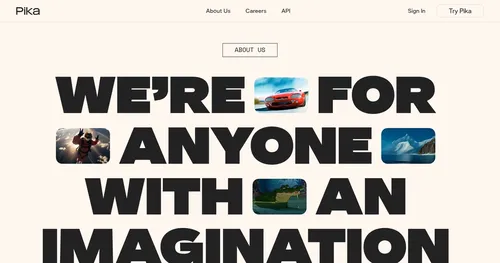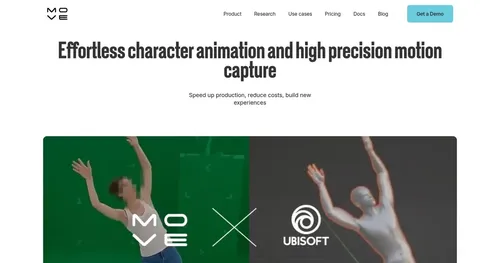Clipchamp by Microsoft
Microsoft Clipchamp bursts onto the scene like a friendly guide, ready to demystify video editing for anyone who’s ever felt intimidated by clunky software. I think it’s the kind of tool that makes you wonder why video editing ever felt so hard. With its browser-based interface, it’s as if Clipchamp whispers, “You don’t need a fancy computer or a film degree to make something great.” You just hop into Microsoft Edge or Google Chrome, and you’re off, trimming clips, adding snazzy transitions, or letting AI sprinkle some magic with auto-generated subtitles. It’s accessible, it’s intuitive, and it feels like Microsoft took a good look at what casual creators and small businesses need.
What’s immediately striking is how Clipchamp balances simplicity with power. The drag-and-drop timeline is a godsend for beginners, letting you layer video, audio, and effects without breaking a sweat. Features like AI Subtitles, which transcribe your audio into captions in over 80 languages, are a standout, saving hours of manual work. The Text-to-Speech tool, powered by Microsoft Azure, churns out natural-sounding voiceovers in hundreds of voices, which is perfect for narrating a quick explainer video or a YouTube vlog. You can resize videos for platforms like TikTok or LinkedIn with a single click, and the royalty-free stock library — packed with music, clips, and images — means you’re never stuck for content. It’s like having a mini production studio in your browser.
But let’s not get too starry-eyed. Clipchamp’s free plan, while generous with 1080p exports, slaps watermarks on premium stock assets, which might irk creators aiming for a polished look without paying. Compared to competitors like Canva Video Editor, which integrates seamlessly with design tools, or CapCut, a mobile-friendly favorite for TikTok creators, Clipchamp can feel a tad less flexible for advanced editing. Large projects might lag in weaker browsers, a frustration if your laptop isn’t top-tier. And while the iOS app is handy for on-the-go edits, Android users are left out, which feels like an oversight in today’s mobile-first world.
The surprise element? Clipchamp’s integration with Microsoft 365. If you’re already in the Microsoft ecosystem, you can pull media from OneDrive, share via Teams, or save to SharePoint, making it a dream for workplace or classroom projects. The Brand Kit feature, available with premium plans, lets you store logos and colors for consistent branding, a small but mighty touch for businesses. It’s not perfect — advanced editors might crave the granular control of Adobe Premiere Rush — but for most, Clipchamp delivers.
Want to dive in? Start with the free plan to test the waters, use templates for quick wins, and enable content backup to avoid relinking media. If you’re hooked, a premium plan unlocks more stock assets and 4K exports. Play around with AI tools like noise suppression to clean up audio, and don’t sleep on the tutorials — they’re gold for mastering the platform.
Video Overview ▶️
What are the key features? ⭐
- AI Subtitles: Generates accurate captions in over 80 languages.
- Text-to-Speech: Offers 400+ voices for natural-sounding voiceovers.
- Drag-and-Drop Timeline: Simplifies layering video, audio, and effects.
- Stock Library: Provides royalty-free videos, images, and music.
- Resize Video: Adjusts aspect ratios for social media platforms.
Who is it for? 🤔
Examples of what you can use it for 💭
- YouTuber: Crafts engaging vlogs using templates and AI voiceovers.
- Small Business Owner: Creates branded promo videos with stock assets.
- Educator: Produces lecture videos with captions for accessibility.
- Student: Builds presentation videos using drag-and-drop tools.
- Marketer: Designs social media ads with resized video formats.
Pros & Cons ⚖️
- Free 1080p exports
- Robust AI-powered features
- Microsoft 365 integration
- Watermarks on free plan assets
- Limited advanced editing tools
FAQs 💬
Related tools ↙️
-
 Pika
An AI-powered design platform that can translate your ideas into engaging videos
Pika
An AI-powered design platform that can translate your ideas into engaging videos
-
DeepAI Generates images, videos, text, and music from simple text prompts
-
Trupeer Creates polished product videos and guides from screen recordings in minutes
-
 Move Ai
Using patented AI software to extract high-fidelity motion from any video, HD camera, or mobile device
Move Ai
Using patented AI software to extract high-fidelity motion from any video, HD camera, or mobile device
-
Youka Transforms songs into karaoke videos with scrolling lyrics in minutes
-
Mirage Studio Creates lifelike video content with AI-generated actors from audio or text prompts

